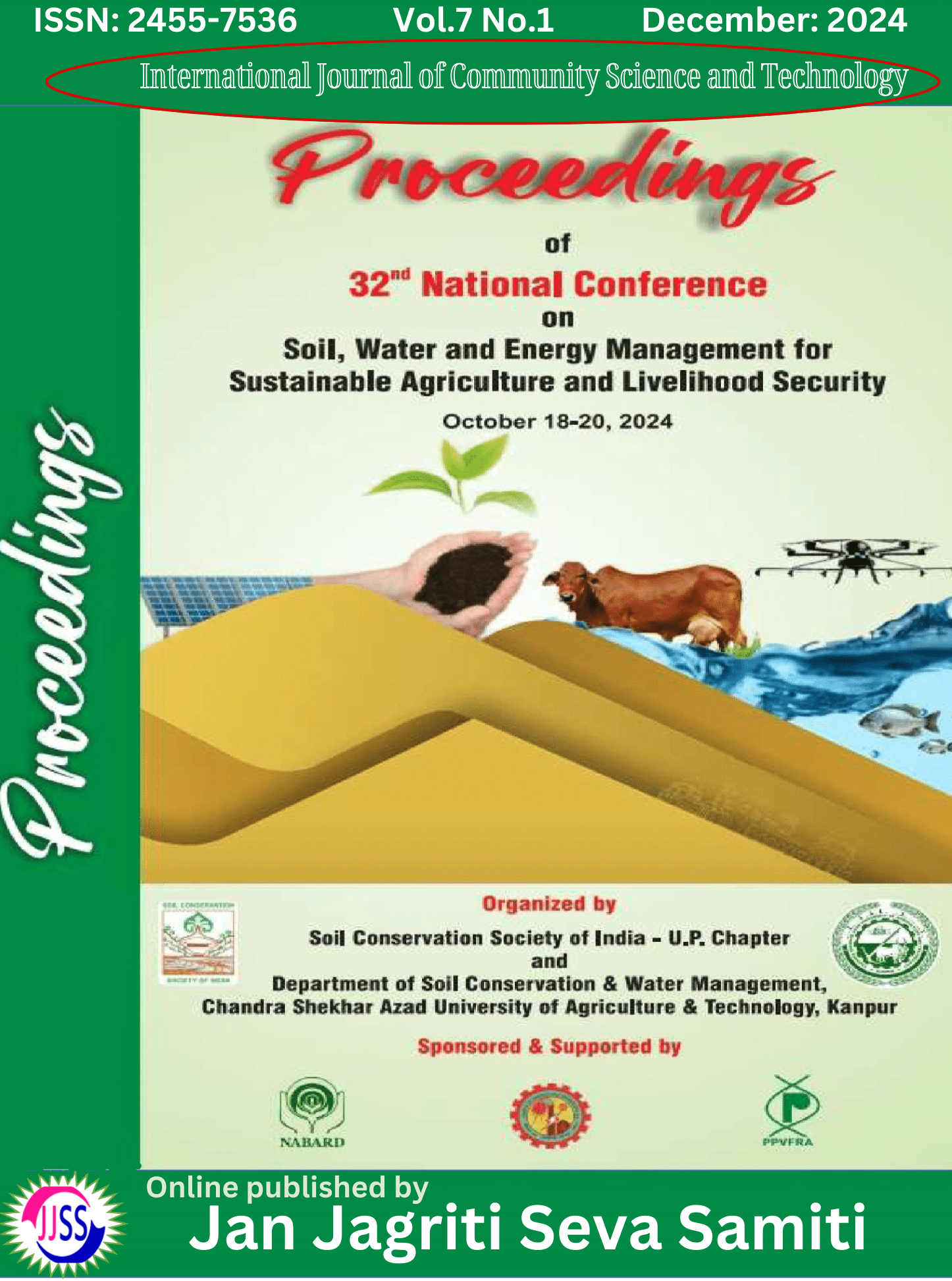EFFECT OF DIFFERENT HERBICIDES ON GROWTH, YIELD AND ECONOMICS OF TRANSPLANTED RICE (ORYZA SATIVA L.) AND SOIL HEALTH IN U.P.
Keywords:
TRANSPLANTED RICE (ORYZA SATIVA L.), HERBICIDES, YIELD AND ECONOMICSAbstract
Rice (Oryza sativa L.) is one of the predominant food crops of the world. It is widely grown in tropical and subtropical regions. According to IRRI, rice is the staple food of more than three billion people in the world, most of who live in Asia. Worldwide rice is grown on an area of 163 million hectare with a production of 741 million tons and with an average productivity of 4.56 tons ha-1. In India, it is grown on nearly 43.39 million hectares with the production of 104.32 million tons triggering productivity of 2404 kg ha-1. Traditional transplanting is the major method of crop establishment in the command area. Weed infestation is the major threat to productivity of transplanted rice. Globally, actual rice yield losses due to pests have been estimated at 40 per cent out of which weeds account for 33 per cent. In India, unchecked weed competition causes yield losses to the tune of 50-65 per cent in rice. Weeds by the virtue of their high adaptability and faster growth dominate the crop habitat and reduce the yield potential of the crop. The problem of extensive weed incidence during early stages of rice crop growth cannot be determined which competes with crop plants for moisture, nutrients, light, space and
other growth factors. This crop competition leads to significant yield losses to the tune of 35-55 percent in transplanted rice. Traditionally weed control in rice is done by manual and mechanical means which are most effective and common methods but they are tedious, costly, time taking and are difficult due to continuous rains during Kharif season. Besides, adequate labourers are also not available during critical period of crop weed competition. These weeds could be controlled through chemical methods. Sometimes, application of pre-emergence herbicides also is not sufficient to give effective weed control for keeping weeds population up to threshold level. Under such situation post-emergence herbicides remains only the viable option for weed control in transplanted rice. Pre- emergence herbicides are most commonly used against grassy weeds in transplanted rice. But post-emergence herbicides are becoming need of the day due to emergence of weeds at later growth stages of crop. Control of weeds by herbicides is although quite effective but needs proper skill and fidelity. The
choice of suitable herbicide is a major problem in many cases. Keeping above facts in views, there is a need to know the effect of post emergence herbicide on growth, yield and economics of transplanted rice (Oryza sativa L.). Weed management with weedicides improves soil health compare to weeding by manually. This is due to incorporation of organic matter in soils. Weedicides are more economical than farmers practices (Manual weeding).
References
Akabar, N., Ali and Ehsanullah., 2011, Weed management improves yield and quality of direct seeded rice. Australian J. Crop Sci., 5(6): 688-694.
Anonymous, 2018, Agricultural statistics at a glance, Government of India Ministry of agriculture & Farmers Welfare Department of Agriculture, Cooperation & Farmers Welfare Directorate of Economics and Statistics: 105.
Kumar, J., Singh, D., Puniya, R. and Pandey, P. C., 2010, Effect of weed management practices on nutrient uptake by direct seeded rice. Oryza, 47(4): 291-294.
Patra, A. K., Halder, J. and Mishra, M. M., 2016, Chemical weed control in transplanted rice in Hirakud command area of Orissa. Indian J. Weed Sci., 43(3& 4): 175-177
Singh, A., Nandal, D. P. and S. S., Punia, 2017, Bio-Efficacy of sequential application of herbicides on weeds and yield in direct seeded rice (Oryza sativa). Int. J. Curr. Microbiol. App. Sci., 6(4): 900-905.
Uma, G., Ramana, M., Venkata, Reddy, A., Pratap, K. and Prakash. T. R., 2014, Evaluation of low dose herbicides in transplanted rice. Int. J. Applied Biology Pharmaceutical Tech., 5: 96-101.

